Vertical Leg vs. Trapezoidal Leg Standing Seam Panels
There are many different types of standing seam (concealed fastener) panels. In fact, at McElroy Metal, we have over ten different panel styles. One of the differences between panel styles involves the shape of the leg or seam of the panel. Depending on the shape, panels are commonly referred to as trapezoidal leg or vertical leg panels. See the photo below for an example of each.
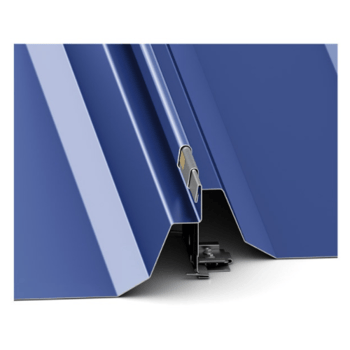 |
 |
| Trapezoidal: McElroy Metal ML90 Panel | Vertical Leg: McElroy Metal Maxima Panel |
To some folks, only panels with a strict 90° leg fall into this class, including panels like our Maxima and not panels like our Meridian (pictured below). With that said, some manufacturers and installers use the term “vertical” leg much more loosely and refer to these panels as vertical legs.
McElroy Metal: Meridian Panel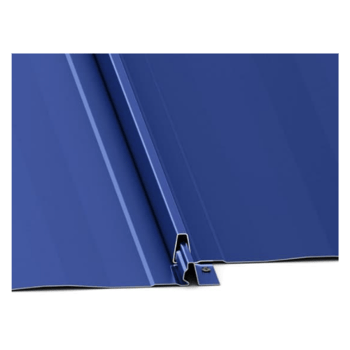
For this discussion, we will limit the term “vertical leg panels” to those that feature a 90° leg. Consequently, we will compare panels that resemble our Maxima, 138T/238T, and Medallion Lok to trapezoidal panels like our MasterLok-90 and MasterLok-FS.
Beyond the obvious aesthetics, the panel shape carries implications that are important for owner consideration. Because cost is always important to business owners, let’s start there. Trapezoidal panels are almost always less expensive systems than their vertical leg counterparts.
The cost difference stems from two factors: the panel cover width and the packaging approach. First, trapezoidal panels are typically 24” wide while vertical leg panels are more common in 16”-18” widths. Wider panel widths are generally less expensive to both purchase and install. The packaging required between the two panel types also varies. Due to their panel shape, trapezoidal panels typically use the “nesting” method where vertical leg panels are routinely packaged on their side and require custom-built wooden crates. Vertical leg panels also often require a vinyl film to be applied on the panels during production to prevent damage during transportation.
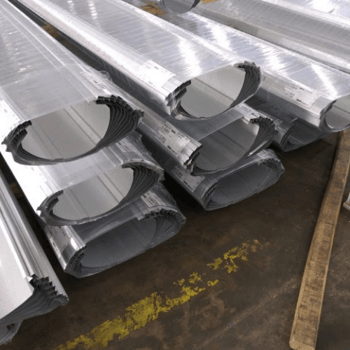 |
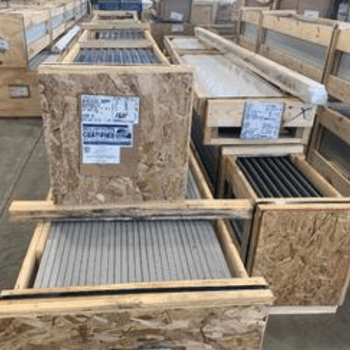 |
| Trapezoidal Panel Packaging | Vertical Leg Panel Packaging |
Given the lower cost, you might wonder why any building owner would choose a vertical leg over a trapezoidal panel. For some, it’s simply a matter of aesthetics since most folks agree that the vertical leg panels are simply more visually attractive. But it’s also important to note that trapezoidal panels aren’t necessarily the best product selection for all building footprints.
Due to their large trapezoidal shape, these types of panels can be challenging to make watertight at eave conditions and almost impossible to make weathertight at valley conditions. For those reasons, trapezoidal panels perform best on simple square structures that don’t involve hips, valleys and other challenging details.
While there is nothing to prevent architectural applications from using trapezoidal panels, pre-engineered buildings with slopes below 2:12 are most common. Vertical leg panels tend to be more prevalent for projects where aesthetics play a more prominent role and structures with slopes 2:12 and above.
Building size is also a consideration in panel selection, as is the desire to have a single piece or spliced panel. It is possible to lap both Trapezoidal and some Vertical leg panels for panel runs greater than 50’ long. When correctly installed (and often they aren’t!), it’s important to realize that panel end laps rely on screws penetrating the roof panel and tape sealant to make the system weather tight (see image below).
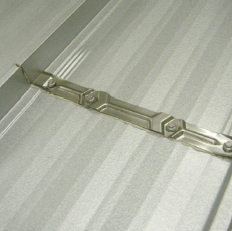
Trapezoidal Panel Lap Detail
Whether the panels used are Trapezoidal or Vertical leg, lap details represent a weakness in the roofing system that undoubtedly shortens the potential lifespan.
Consequently, many contractors and building owners prefer to opt for a vertical leg panel that can be jobsite produced in lengths up to 250’, thereby eliminating the need for a panel end lap. Onsite panel production often involves producing the panels right onto the roof plane, as shown in the image below. Consequently, onsite panel production can remove the risk of leaks at panel end laps, requires less labor to install since the end lap details are time-consuming, and saves on packaging expense and removal of packaging materials from the rooftop. So the benefits of onsite production are numerous!
![]()
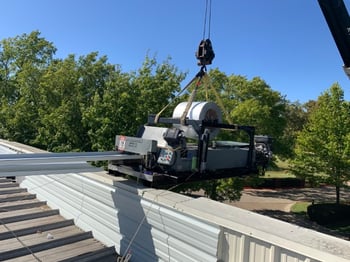
On-Site Panel Roll-Forming Equipment
So which panel is right for you? Factors like building geometry, slope, panel length, and aesthetics all ultimately affect your panel decision. If you’re not sure which type is right for you, contact us. We’re here to help!
About McElroy Metal
Since 1963, McElroy Metal has served the construction industry with quality products and excellent customer service. The employee-owned components manufacturer is headquartered in Bossier City, La., and has 14 manufacturing facilities across the United States. Quality, service and performance have been the cornerstone of McElroy Metal’s business philosophy and have contributed to the success of the company through the years. As a preferred service provider, these values will continue to be at the forefront of McElroy Metal’s model along with a strong focus on the customer.





.png?width=767&name=The%205%20Most%20Common%20Metal%20Roofing%20Installation%20Mistakes%20(And%20How%20to%20Avoid%20Them).png)
.png?width=440&height=293&name=How%20to%20Install%20Metal%20Roofing%20Over%20Existing%20Metal%20Roofs%20(1).png)


Comments on this article:
Scroll down to the bottom to submit a comment and join the conversation. Need help or have a question? Please contact us. Looking for a distributor or contractor? Please click here to get started.